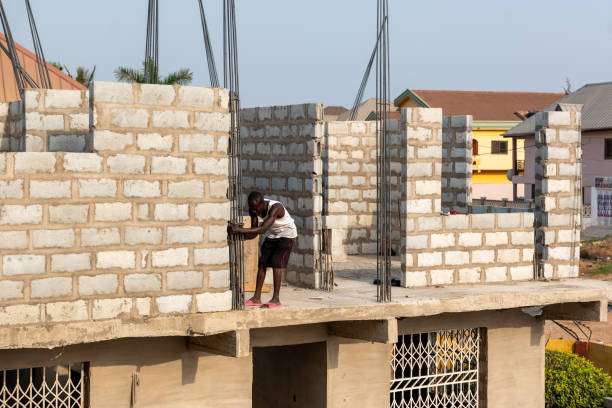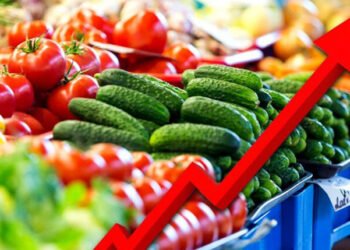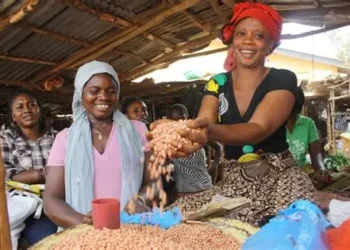The Construction Producer Price inflation (C-PPI) rate for September 2022 was 25.1 percent. This rate represents a 1.1 percentage point decrease in producer inflation relative to the rate recorded in August 2022 (26.2%).
This rate indicates that between September 2021 and September 2022 (year-on-year), the C-PPI increased by 25.1 percent. On a month-on-month basis, the change in the C-PPI between August 2022 and September 2022 was 1.4 percent.
Within the construction sector, inflation in the construction of buildings subsector increased by 4.4 percentage points over the rate of 84.5 percent recorded in August 2022 to 88.8 percent in September 2022.
The rate for the civil engineering sub-sector decreased by 2.5 percentage points to 5.4 percent in September 2022.
In September 2022, construction of utility projects recorded the highest inflation in the civil engineering industry with 49.3 percent while construction of roads and railways decreased by 2.5 percentage points to 5.4 percent
Specialized Construction Sector
The specialized construction activities subsector also recorded a 5.2 percent inflation rate for September 2022 compared with 6.1 percent in August 2022.
The producer inflation rate for Building completion and finishing in the specialized construction industry increased by 14.6 percentage points to record 39.2 percent in September 2022, higher than the 24.6 percent recorded in August 2022.
‘Other construction installations’ subsector also witnessed an increase in producer inflation by 23.9 percentage points to 26.7 percent in September 2022. The Other specialized construction activities recorded inflation rate of 4.7 percent in September 2022, indicating a decline of 1.0 percentage point over the rate of 5.7 percent recorded in August this year.
Beginning September 2022, the Ghana Statistical Service changed the method of reporting the PPI, following inclusion of new items. The GSS therefore, reported separate PPI for 3 major sectors; construction, services, and industrial.
Abridged Methodological Guide For Producer Price Index
The Statistical Service publishes monthly PPI on changes in producer prices on year-on-year (e.g., September 2021 to September 2022) and month-on-month (e.g., August 2022 to September 2022) basis.
The Producer Price Index (PPI) measures average changes in prices over time for goods and services produced in Ghana. The prices measured by PPI are known as the factory gate prices, which is the price that firms assign to their products, excluding taxes, transportation, and other costs added on by third parties.
PPI is primarily used to adjust GDP for price changes in cases where changes in GDP are driven by producer price changes rather than production. Businesses utilize PPI to inform the adjustment of prices, while contractors use the information on price changes to guide costing and budgeting.
Computation of the Producer Price Index
The PPI computation is based on a fixed basket of products. The selection of items in the basket is based on information collected during the initiation survey in 2019, involving 835 randomly selected establishments from the 2013 Integrated Business Establishment Survey database. The shares have been updated using the 2019 Gross Value of Output (GVO) from the National Account estimates.
The GSS collects data on 2,639 items from 603 firms nationwide each month. The classification of products is done using the Central Product Code (CPC v.2.1), while that of firms is done using the International Standard Industrial Classification, revision V (ISIC rev. IV).
Product weights are calculated for each product based on the share of the firm’s revenue from each product. For Company A, for example, weights will be generated separately for the company’s specific products. The weights for individual items are firm-based and then aggregated, meaning, for example, products 1 and 2 in Company A would have different shares relative to company A’s revenue. Sector and industrial weights are further calculated based on their contribution to the 2019 annual GVO.
Rebased Producer Price Index
The September 2022 PPI release featured an expanded basket of products that adds petroleum, construction, and services to better reflect the current economy. The September 2022 PPI thus, featured the following sectors: mining; manufacturing; electricity and gas; water supply, sewerage, and waste management; construction; transportation and storage; accommodation and food service activities; and information and communication
Going forward, the GSS disclosed that it will expand the basket to include the agriculture sector and produce PPI across the 16 regions going into IBES data collection in 2023.
READ ALSO: Government Owes NHIS Service Providers In Excess Of GHC2 Billion- Akandoh























